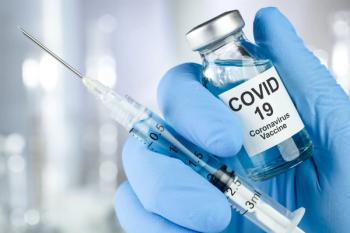
Assessing Risk Factors for PsA Development in Patients With Psoriasis
Use of biologics and age may influence risk of psoriatic arthritis (PsA) development in patients with psoriasis, according to findings presented at the 2021 American College of Rheumatology Annual Meeting.
Findings of 2 abstracts presented at the 2021
In determining predictors of PsA development,
“There is significant variability in the timing of transition from psoriasis to PsA which contributes to delays in diagnosis and high rates of undiagnosed PsA,” the researchers noted.
They conducted a longitudinal analysis of patients with psoriatic disease, in which the time between psoriasis and PsA diagnoses was calculated as the number of years between the 2 diagnosis dates (N = 384; median age at psoriasis diagnosis, 30.4 years; 52.2% female).
Several candidate predictors were included: gender, age at psoriasis diagnosis, family history of psoriasis, body mass index (BMI), treatment, cardiovascular disease, hypertension, diabetes, dyslipidemia, nail involvement, dermatology life quality index (DLQI), elevated
A subgroup analysis was additionally conducted utilizing
After controlling for relevant variables in the model, age at diagnosis of psoriasis was shown to be significantly associated with transition time from psoriasis to PsA, in which patients aged 42.6 years had on average 12 years less in time to PsA diagnosis than those aged 18.9 years (–11.88 years; 95% CI, –13.64 to –10.12 years; P < .001).
The overall effect of treatment regarding biologic and nonbiologic use, as well as the overall effect of BSA, were both not significantly associated with time to PsA diagnosis in patients with psoriasis. “Age at [psoriasis] diagnosis contributed the most to the model according to the AIC….These results suggest that older patients diagnosed with psoriasis may benefit from earlier screening for PsA,” the authors wrote.
Adding to results shown in the first study, researchers of the second abstract sought to investigate the effect of biologic treatments for psoriasis on the incidence of PsA.2
They conducted a retrospective cohort study of electronic medical records derived from a large health maintenance organization that included patients who had received biological treatment for psoriasis and were not diagnosed with PsA before or at the time of biologic treatment initiation (n = 663).
Propensity score matching was implemented to match patients undergoing biologic therapy with controls (n = 663) by age at diagnosis, gender, time until treatment initiation, maximum BMI, and smoking.
According to the Kaplan-Meier curve for the propensity score matched groups, a statistically significant increased risk for PsA was observed in the control group compared with the biological treatment group.
Results of the multivariable Cox regression analysis confirmed these findings with the control group shown to be at 39% increased risk of PsA development than the biologic treatment group (adjusted HR [aHR], 1.39; 95% CI, 1.03-1.87; P = .0295). Female gender was also linked with significantly increased risk of PsA development in those with psoriasis (aHR, 1.80; 95% CI, 1.34-2.42; P < .0001).
“The results suggest considering treatment with biologic medications in patients that present with significant risk factors for PsA at an earlier stage of treatment,” concluded researchers.
References
1. Cheemalavagu S, Jin Y, Husni E. The transition to psoriatic arthritis: what factors predict a shorter transition from psoriasis to psoriatic arthritis? Presented at: ACR Convergence 2021; Virtual. Abstract 1798. https://bit.ly/3r5uFQG
2. Sagy I, Shalev Rosenthal Y, Schwartz N, Pavlovsky L. Psoriatic arthritis incidence among patients receiving biologic medications for psoriasis: a nested case control study. Presented at: ACR Convergence 2021; Virtual. Abstract 1355. https://bit.ly/3CHJFq1
Newsletter
Stay ahead of policy, cost, and value—subscribe to AJMC for expert insights at the intersection of clinical care and health economics.









































